Education
-
1990: Ph.D., Harvard University
-
1983: A.M., Harvard University
-
1981: M.A., University of Illinois, Urbana-Champaign
-
1979: Licenciatura en Letras, Universidad de Chile
Research
-
Chilean Literature and Film
-
Contemporary Spanish-American Narrative Fiction
-
Colonial Spanish-American Literature
Books
-
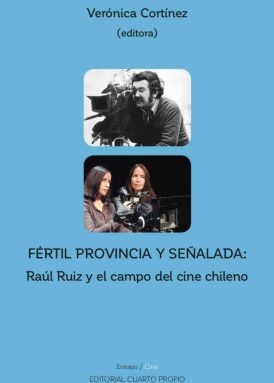
- Fértil provincia y señalada: Raúl Ruiz y el campo del cine chileno
- Editorial Cuarto Propio, 2018
-
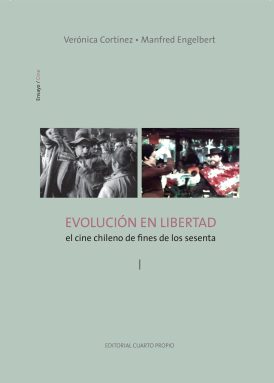
- Evolución en libertad: El cine chileno de fines de los sesenta
- V. I
- Editorial Cuarto Propio, 2014
-
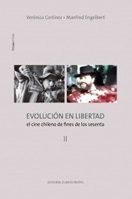
- Evolución en libertad: El cine chileno de fines de los sesenta
- V. II
- Editorial Cuarto Propio, 2014
-

- La tristeza de los tigres y los misterios de Raúl Ruiz
- Editorial Cuarto Propio, 2011
-
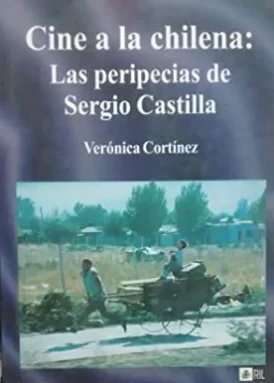
- Cine a la chilena: Las peripecias de Sergio Castilla
- RIL Editores, 2001
-

- Albricia: La novela chilena del fin de siglo
- Editorial Cuarto Propio, 2000
-
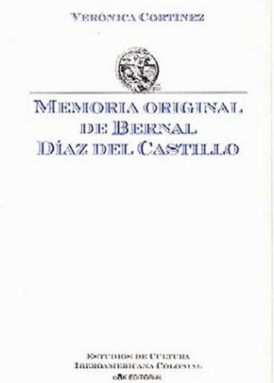
- Memoria original de Bernal Díaz del Castillo
- Oak Editorial, 2000
Articles
- “¿Cómo escribir la historia del cine chileno de los sesenta?,” Revista Letral 29 (July 2022): 209-235.
- “Film and Literature in Chile: The Emergence of a Cultural Field,” A History of Chilean Literature. Ed. Ignacio López-Calvo. Cambridge: Cambridge University Press, 2021. 558-590.
- “¿Nuestro Raoul: De qué estamos hablando?,” De Ruiz a la utopía contemporánea en el cine chileno y latinoamericano. Ed. Mónica Villarroel. Santiago: LOM, 2017. 167-185.
- “Cervantes y Gentille Alouette de Sergio Castilla,” Iberoromania 83 (May 2016): 84-102.
- “Sergio Castilla: The Emblematic Chilean Filmmaker,” The Other 9/11: Chile, 1973 – Memory, Resistance, and Democratization. Eds. Alicia del Campo et al. Special Issue of Radical History Review 124 (Jan. 2016): 192-202.
- “Bálsamo de Fierabrás,” Homenaje afectivo a Francisco Márquez Villanueva. Eds. Antonio Cortijo Ocaña and Francisco Layna Ranz. eHumanista/Cervantes: Journal of Iberian Studies (Oct. 2013): 130-31.
- “El cine chileno de los sesenta: clave para una cultura moderna,” with Manfred Engelbert, Arpillera sobre Chile: Cine, teatro y literatura antes y después de 1973. Eds. Annette Paatz and Janett Reinstädler. Berlin: Edition Tranvía-Verlag Walter Frey, 2013. 13-59.
- “¿Se habla español?: The Challenge of the Hispanic Wor(l)d,” Hispanorama. Zeitschrift des Deutschen Spanischlehrerverbandes 130 (Nov. 2010): 79-90.
-
“Granas e lanas: Memoria de los orígenes en Bernal,” Nueva Revista de Filología Hispánica LVIII.1 (2010): 257-68.
-
“No pasarse de la raya: Una estética cinematográfica de la transición en El chacotero sentimental,” Memoria, duelo y narración. Chile después de Pinochet: literatura, cine, sociedad. Eds. Roland Spiller et al. Frankfurt am Main: Vervuert Verlag, 2004. 81-97.
-
“Retratos de mujeres, con Violeta: Mijita de Sergio Castilla,” Texto social: Estudios pragmáticos sobre literatura y cine. Eds. Annette Paatz and Burkhard Pohl. Berlin: Edition Tranvía-Verlag Walter Frey, 2003. 123-37.
- “El siglo de Borges,” Taller de Letras 33 (Nov. 2003): 63-82.
-
“Macondo versus McOndo: La teoría de la aldea global,” La literatura iberoamericana en el 2000: balances, perspectivas y prospectivas. Eds. Carmen Ruiz Barrionuevo et al. Salamanca: Ediciones Universidad de Salamanca, 2003. 279-85.
- “Poemas inéditos de Jorge Teillier,” Revista Hispánica Moderna LV.1 (June 2002): 159-67.
-
“Isabel Allende,” Latin American Writers. Supplement I. Ed. Carlos Solé. New York: Charles Scribner’s Sons, 2002. 1-13.
- “Horacio y la memoria de Borges,” Sin fronteras: Ensayos de literatura comparada en homenaje a Claudio Guillén. Eds. Darío Villanueva, Antonio Monegal, and Enric Bou. Madrid: Editorial Castalia, 1999. 153-61.
- “Carlos Germán Belli, o el umbral del más allá,” Confluencia 12.1 (Fall 1996): 205-209.
- “La parroquia y el universo: Historia personal del ‘boom’ de José Donoso,” Revista Chilena de Literatura 48 (April 1996): 13-22.
- “De Poe a Borges: La creación del lector policial,” Revista Hispánica Moderna XLVIII.1 (June 1995): 127-36.
- “Yo, Bernal Díaz del Castillo’: ¿Soldado de a pie o idiota sin letras?,” Revista Chilena de Literatura 41 (April 1993): 59-69.
- “La construcción del pasado en la Historia verdadera de la conquista de la Nueva España y La casa de los espíritus,“ Hispanic Review 59.3 (Summer 1991): 317-27.
Dissertation
Chak Han Laura Lee (2022); “Modernity in Transition: Roberto Arlt’s Aguafuertes porteñas”
Juliana Espinal (2021), Santa Monica College, Los Angeles, California; “De forma oblicua: Representaciones de la violencia paramilitar en la Colombia del siglo XXI”
Paula A. Thomas (2021), Sequoyah School, Pasadena, California; “El espacio público y el derecho a la ciudad en el Santiago de Alberto Fuguet”
Lourdes Arévalo (2019), Santa Monica College, Los Angeles, California; “Dos o tres cosas sobre la novela de la Violencia y las violencias en Colombia”
Francesca Gambini (2019), Mt. San Antonio College, Walnut, California; “La producción cultural del Perú ante la Comisión de la Verdad y Reconciliación”
Ezekiel Trautenberg (2018), Geffen Academy at UCLA, Los Angeles, California; “A Porous Cinema: Cosmopolitanism and Cinephilia in Chilean Art Cinema (2005-2015)”
Claudia Villegas-Silva (2012), Arizona State University, Phoenix, Arizona; “Tecnologías en escena: Del teatro multimedia al teatro cibernético en España y las Américas”
Paula Thorrington (2011), University of Point Loma Nazarene, San Diego, California; “An Ode to Joy: Chilean Culture of the Eighties against Pinochet”
Catalina Forttes (2010), Pontificia Universidad Católica de Chile, Valparaíso, Chile; “Una obra en transición: La narrativa de Alberto Fuguet”
Leah H. Kemp (2010), University of Southern California, Los Angeles, California; “Citizenship in Chilean Post-dictatorship Film: 1990-2005”
Rachel Van Wieren (2010), National University, Los Angeles, California; “Exploring the Margins of Patagonia in Chilean Fiction”
Gabriela Capraroiu (2007), University of La Verne, La Verne, California; “La conexión rumana: Alberti, Neruda, Lara”
Claudia Mesa (2007), Moravian University, Bethlehem, Pennsylvania; “La emblemática en Mateo Alemán y su círculo intelectual”
Alejandro Lee (2005), Santa Monica College, Los Angeles, California; “Chinos de la diáspora en novelas de Isabel Allende, Mayra Montero y Cristina García”
Cristina Moon (2005), Chabot College, Hayward, California; “Dos pilares confrontados: la Historia de la conquista de México de Francisco López de Gómara y la Historia verdadera de la conquista de la Nueva España de Bernal Díaz del Castillo”
Suk Yong Yi-Kang (2005), Fullerton College, Fullerton, California; “De la realidad a la ficción: Representación de la tortura en la obra de Edgar Brau”
Dorina Apahidean (2003), University of North Georgia, Gainesville, Georgia; “La escritura de la historia en la obra de Francisco López de Gómara”
Ann K. Hills (2002), University of La Verne, La Verne, California; “Traitor: The Ethics and Aesthetics of Betrayal in the Narrative of Jorge Luis Borges”
Soraya Alamdari (2001), Glendale Community College, Glendale, California; “Francisco de Vitoria’s Teachings on the New World”
Lisa Palmer (1998, co-chair with Kathy Komar), Cañada College, Redwood City, California; “(Re)Visioning the Female Body: The Doll in Contemporary Latin American Narrative”
Courses
Spanish 19 (Fiat Lux):
Protest Song of the Sixties: US, Cuba, and Chile
In the 1960s, there was turmoil all over the world: the May Revolts in France, the Soviet invasion of Czechoslovakia, the massacre of Tlatelolco, the UC Berkeley student protests, among several other less symbolic events in different Latin American countries, such as the student rebellion at the Catholic University in Chile. After the Cuban Revolution, seen as the political alternative to the communist and capitalist system that divided the world (the Cold War), and Fidel Castro’s rise to power in 1959, there was a revaluation of popular culture, especially music, which became a way to protest the injustices of society. The goal of this course is to analyze the complex relationship between historical events and artistic expression.
Spanish 170:
Violeta Parra
Violeta Parra (1917-1967) is an icon of art in Latin America, and she is the embodiment of an independent woman searching for her place at the center of the social and political conflicts of the 20th century. Her song lyrics, poems and paintings merge and combine elements from old traditions – often connected with the Spanish legacy of Golden Age forms, such as the ten-line décima espinela, widely spread in Latin American folk poetry – with contemporary problems. She does so with confidence in human progress, reason, and the necessity of love, both at the individual and at the social level. Her most famous poetic song is “Gracias a la vida” which, at the end of her life, sums up her aspirations, inspiring American songwriters like Pete Seeger and Joan Baez.
Spanish 180:
Cinema, politics, and aesthetics: The case of Sergio Castilla
In the films of Chilean director Sergio Castilla aesthetic expression changes as the artist tries to adapt his cinema to changing political and social circumstances. The course traces the transformation of cinematographic forms from his first documentary Mijita (1970), filmed in a Chilean shantytown, to his last short fiction 1&2 (2008), filmed in Brooklyn, where the American 9/11 evokes another 9/11, the Chilean military coup of 1973. We shall follow Castilla through exile in Sweden, Cuba, France, and the US, and his return to Chile in the 1990s after the transition to democracy. Taking into account the recent history of Chile, we will see how Castilla uses reality, history, images, editing, and sound in order to create a world of his own.
Spanish 191C:
Spanish American Novella
This seminar focuses on the novela corta, the prose genre known as novella in English and nouvelle in French, often praised by fiction writers and literary critics for its narrative perfection. At first glance, the novella stands out for its odd intermediate length between the short story and the novel. Despite its distinguished lineage, it is sometimes dismissed as a very long short story or just a short novel, as its name in Spanish would have it. Yet, in a more nuanced fashion, Robert Silverberg praises the novella as a literary genre of its own, one that has “the concentrated focus of the short story and the broad scope of the novel,” which in turn results in “an intense, detailed exploration of its subject.” We will discuss the main aspects of the novela corta through close readings of some notable examples of the genre in Spanish American literature from 1938 to 2019. We will also examine the intertwined issues of content and form as well as several literary-historical and narrative concepts.
Spanish 241A:
El cuento hispanoamericano
A critical review of the theory and practice of the short story in Latin America from its costumbrista beginnings to the latest trends of the McOndo generation, with due reference to the masters of the genre, such as Quiroga, Borges, Cortázar, Rulfo, and Peri Rossi. Special attention will be given to Poe as the international founding father.
Spanish 244A:
Gestación y autogestión del boom
The course tries to answer the apparently simple question: What is the boom? The socio-aesthetic complex which allows for the international birth of the Latin American novel in the 60s will be examined first through the agencies responsible for the phenomenon: publishers, journals, critics, and the authors themselves. Second, we will analyze some of the major novels to see how aesthetic and politics fit together. Third, a special place will be given to José Donoso as retroactive critic of and metafictional writer on the boom.
Spanish 290:
Medio siglo de cultura chilena: 1960-2010
The matrix of Twentieth-Century Chilean culture has been described by sociologist Manuel Antonio Garretón as national, state driven, democratic, and popular. The seminar will explore how this comprehensive formula applies to the reform years from Frei to Allende (1964-1973) and how it was affected by the military dictatorship and the democratic normalization since 1990. Special attention will be given to cinema as the medium that combines different cultural phenomena, such as folklore and pop music, religious traditions from the countryside, urban theater, national sports, social documents, and historical icons.
Spanish 290:
Violencia y memoria en el mundo hispánico
The course examines case studies of historic violence in the Hispanic world and the literary and cinematographic memory of those events. We start with the Chilean dictatorship of Augusto Pinochet and Sergio Castilla’s cinematographic work, with a special focus on the film Gentille Alouette (1985-1990) as a sophisticated form to remember and overcome the effects of violence of the Latin American dictatorships. Students propose a research topic according to their own interests.
Spanish 290:
Alberto Fuguet: Ficción y realidad
This course is an introduction to contemporary Latin American fiction through the works of one of its outstanding figures, Chilean writer Alberto Fuguet. The course focuses on the close reading and socio-critical analysis of his first novel Mala onda (1991), as well as his two latest novels, No ficción (2015) and Sudor (2016). We also consider Fuguet’s ties to cinema, reflected in Por favor, rebobinar (1994) and explicitly documented in his own film Se arrienda (2005). The author’s visit to UCLA will allow us to test the validity of our approach.
